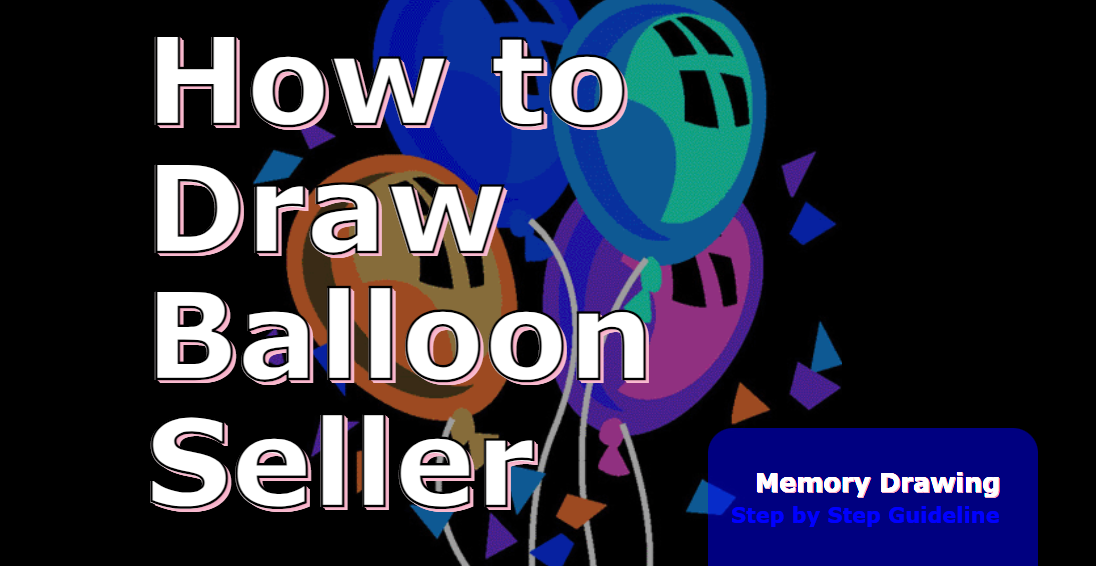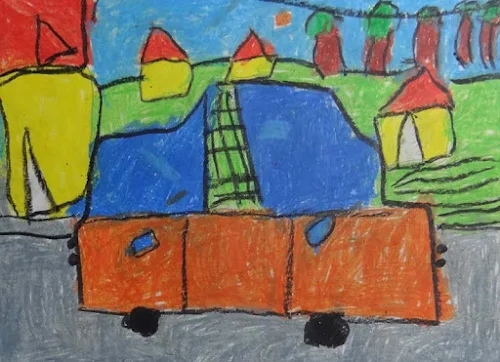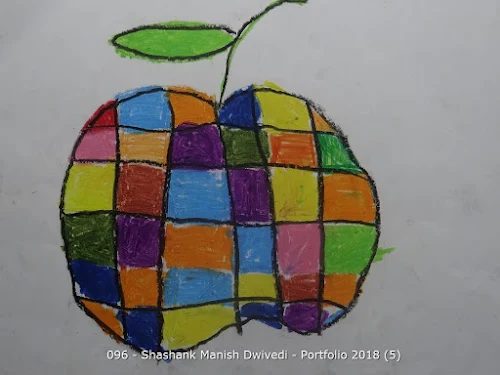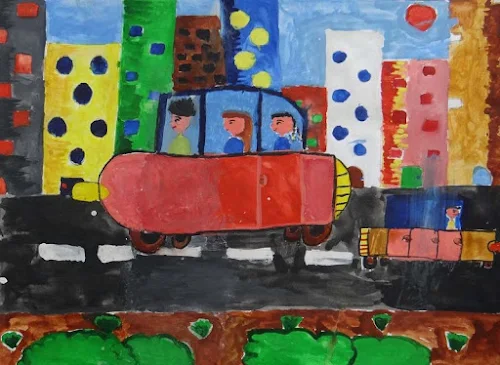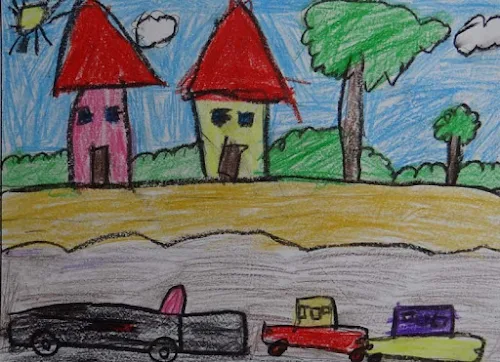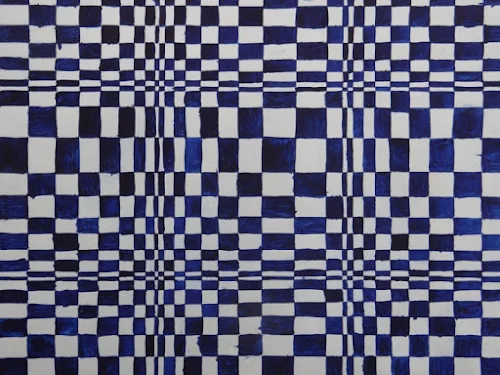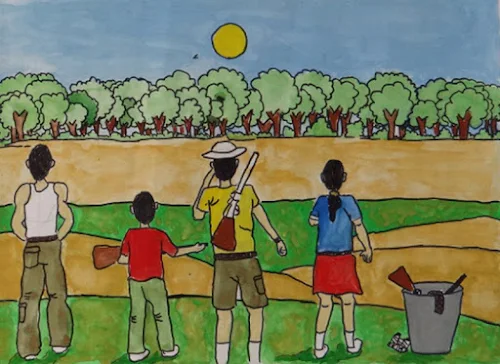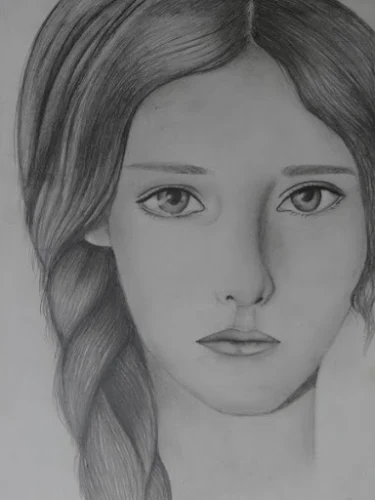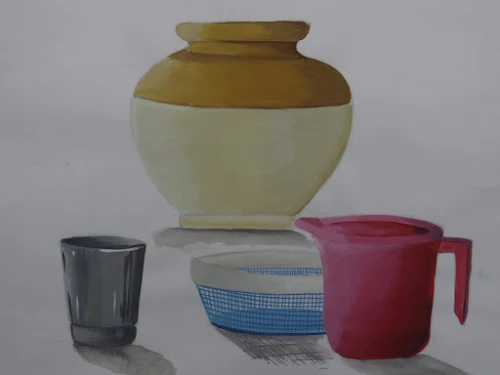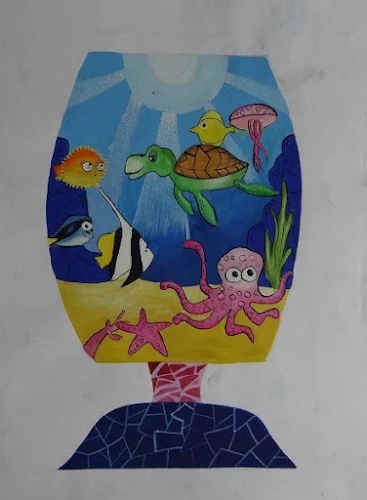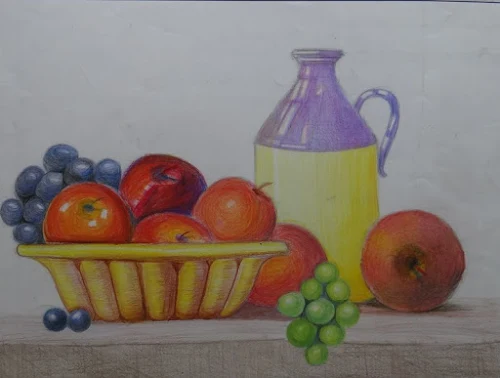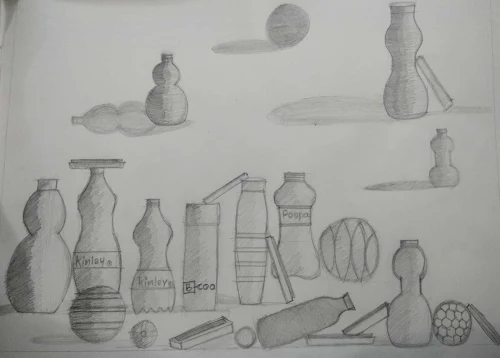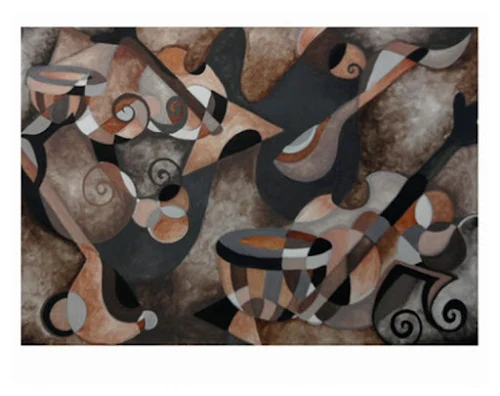– Leonardo da Vinci
How to Draw Balloon Seller
Memory Drawing
Step by Step Guideline
In this memory drawing, we revisit a delightful encounter with a balloon seller. Through art, we aim to evoke the nostalgia and joy of this cherished memory.
– Pencil, Paper, Eraser, Colored pencils / Water Colours / Poster Colours / Oil Pastels
| Memory Drawing Balloon Seller Step by Step Guideline |
| Recall the Memory: Before you begin, close your eyes and vividly recall the memory of the balloon seller. Think about the setting, the people around, the balloons, and the emotions of the moment. |
| Visualize the Setting: Begin by sketching the background or setting for your memory. This could be a fair, a bustling street, a park, or any location where a balloon seller might be found. Include elements that were part of the memory, such as stalls, trees, or buildings. |
| Draw the Balloon Seller: In the center of your drawing, sketch the balloon seller. Pay attention to their posture, attire, and expression. Capture their personality and the essence of their role as a seller. Are they smiling, engaging with customers, or holding balloons? |
| Add Faces and Expressions: Detail the faces of the balloon seller and any customers in your memory. Capture their expressions - the joy of children receiving balloons or the gratitude of customers. Faces are key to conveying emotions. |
| Illustrate the Balloons: Draw the balloons the seller has on display. Use a variety of shapes, sizes, and colors. Balloons can be tied together or attached to strings, creating a dynamic and colorful display. |
| Include Details: Add details that enhance the scene, such as a small table or cart used by the seller to display the balloons, a money box, or a sign that says "Balloons for Sale." |
| Background Elements: Continue by adding more details to the background, like people walking by, children playing, or the surroundings. These elements help set the scene and make your drawing more realistic. |
| Clothing and Accessories: Pay attention to the clothing and accessories worn by the balloon seller. Draw patterns, textures, and any specific items they had on, like an apron, hat, or badges. |
| Coloring: If you want to add color, choose vibrant and cheerful colors for the balloons, clothing, and surroundings. Use complementary colors to make the balloons pop and convey a festive atmosphere. |
| Shading and Highlights: To add depth and realism to your drawing, use shading to create shadows. Highlight the balloons and the seller's attire to make them appear three-dimensional. |
| Texture and Patterns: If there are patterns on clothing or texture in the surroundings (like a cobblestone street or grass), incorporate them to add detail and depth to your memory drawing. |
| Reflection on the Memory: As you work on your drawing, reflect on the emotions and significance of the memory. Consider what made that moment special and how you can convey it through your artwork. |
| Review and Adjust: Step back and review your drawing. Make any necessary adjustments to improve the overall composition, accuracy, and emotional impact of the scene. |
| Name and Date: Name your artwork and date it. This marks the moment when you captured this cherished memory in your drawing. |
Creating a memory drawing of a balloon seller is a personal and emotional journey. Each detail you add brings your memory to life on paper, allowing you to relive and share that moment with others. Enjoy the creative process and let your emotions guide your artistic expression.
| Here are some additional details to consider when creating a memory drawing of a balloon seller: |
| Expression and Body Language: Focus on capturing the expression and body language of the balloon seller. Is the seller enthusiastic, friendly, or busy attending to customers? Are they engaged in a conversation or actively selling balloons? These details convey the seller's character and the atmosphere of the scene. |
| Customers and Interactions: If there were customers in your memory, include them in your drawing. Depict their interactions with the seller – children reaching for balloons, parents making purchases, or friends laughing and chatting. These interactions add a story to your memory drawing. |
| Display Setup: If the seller had a specific display setup, recreate it as closely as possible. This may include a small stand or cart with neatly arranged balloons, a price list, or a colorful umbrella providing shade. |
| Props and Tools: Consider any props or tools the seller used. This might be a pump for inflating balloons, a money pouch, or a notepad for keeping track of sales. These items contribute to the realism of your drawing. |
| Balloons in Motion: Draw some balloons in motion, as if a child is reaching for one or a customer is taking a balloon. Use curved lines and subtle smudging to depict the motion and the balloon's weightlessness. |
| Lighting and Shadows: Pay attention to the source of light in your memory. If it was a sunny day, illustrate the play of light and shadows on the seller, balloons, and the surroundings. This adds depth and realism to the scene. |
| Crowd and Atmosphere: If the memory involves a bustling crowd or a lively atmosphere, draw people in the background engaged in various activities. This adds context and makes the scene more dynamic. |
| Text and Signage: Include any text or signage from your memory, such as the seller's handwritten signs, price tags, or advertising banners. Authentic text adds a personal touch to your drawing. |
| Background Context: Think about the broader context of the memory. Is the balloon seller at a fair, a local market, or a street corner? Add elements that reflect this context, like stalls, other vendors, or landmarks that are relevant. |
| Emotional Significance: Throughout the drawing process, keep in mind the emotional significance of the memory. Consider what made that moment special or memorable to you, and strive to capture it in your artwork. |
| Share and Preserve: Once your memory drawing is complete, you can choose to share it with others or keep it as a cherished keepsake. Your artwork serves as a visual and emotional reminder of a moment that touched your heart. |

